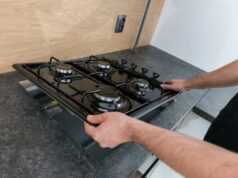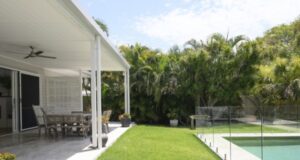
Most doors are big, heavy, moving objects – and as anyone who’s ever walked into one can tell you, even glass doors can be dangerous. Read on to find out about all things related to door safety.

There many sorts of accidents that can occur with doors, some of them more preventable than others. The kinds of injuries you might incur range from anywhere between a splinter and a spinal injury, so it’s a good idea to understand the sorts of risks that might be involved when you’re looking at doors.
Glass doors
Large, clear panels of glass as often found in sliding glass doors and stacker doors can sometimes give the appearance that the door’s open, especially under certain lighting conditions. Anyone not paying attention could walk right into the glass, possibly even breaking it, depending on how fast and careless they’re being at the time.
This problem must be dealt with by making the glass clearly visible. Glass doors are considered not to be clearly visible if they don’t have one of the following:
- decorative treatments (such as opaque or patterned glass)
- transoms
- colonial bars
- other components making the glass pane noticeable.
If they don’t have any of these features, all of the panes in the sliding or stacker doors must be marked by an an opaque band that runs across the width of the pane of glass. This band should be at least 20mm wide, and set at a height between 700mm and 1200mm from floor level.
Door sills
The bottom part of a door (i.e. the door sill) can present a tripping hazard to those walking through if it’s elevated or not particularly obvious. If it’s not possible to lower the sill, to reduce the possibility of falls clear labelling might be used to draw attention to the hazard – or perhaps some sort of ramping up to the sill so that feet don’t get caught on the outcrop.
Door handles
Some door handles project quite far out from the door, or protrude into walkways when the door’s at rest wide open. This can cause them to catch on clothing and limbs when people are walking past. Having these handles replaced with closer lying, lower profile handles might be a way to solve this issue.
Swing direction
Having a door swing out into a busy walkway will inevitably cause accidents when opening the door blind. Doors shouldn’t open out into busy walkways in the first place, but if they do, clear panels in the door may help people to see when it is safe to open them. Replacing the door with a less protrusive alternative like a sliding door will also help to neutralise the risk.
Door guards
If you’ve ever caught your fingers in a door at either the open or hinged end, you will know how much this hurts! Door guards can help stop this from happening. Door guards involve attaching a layer of rubber or foam to the edge of the door that will push fingers out of harm’s way as the door closes. These also help provide a little additional sound and heat insulation too, so have other benefits besides preventing this particular injury. Door guarding mechanisms may be particularly important for those with young children.





